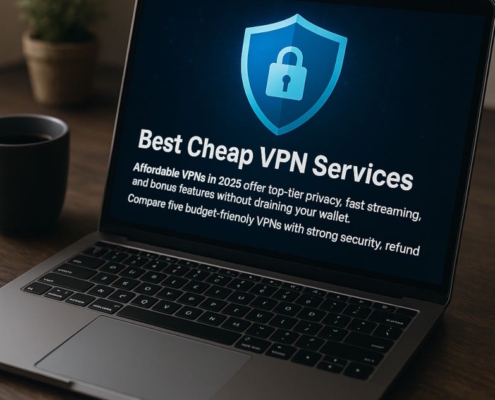What is HR software?
An organization’s daily HR tasks and broader HR objectives can be managed and optimized with the help of HR software. HR managers and employees can use HR software to redirect time spent on time-consuming administrative duties to more profitable and productive endeavors.
Since the 1970s, when computers were initially used for handling human capital data, HR software engineering has advanced significantly. In the 1980s, enterprise clients had more access to HR systems, and in the 1990s, web-based software grew even more prevalent.
Nowadays, the majority of modern systems are subscription-based, cloud-based, readily integrated with additional information management software, and highly adaptable to the demands, objectives, and financial constraints of a specific organization. To put it succinctly, every kind of business can today find an HR software solution.
How do HR SaaS solutions work?
HR software sometimes referred to as “software as a service” or SaaS, helps an organization’s human resources function by automating repetitive processes, organizing personnel data, and producing data-driven reports.
Paper documents are no longer necessary because everything is completed electronically. SaaS HR software can help managers and staff in an organization with things like performance management, updating personnel directories, and time tracking.
Among the tasks that HR software may accomplish are:
- Safely keeping and arranging personnel information
- Setting up processes and monitoring approvals
- Time tracking for self-service
- Monitoring staff training for growth and adherence
- Assessing and documenting employee satisfaction
- Tracking objectives and managing performance
- Management and administration of benefits
- Automation for pre-, on-, and off-boarding
- Integrations of third-party applications
- Keeping track of all data modifications via an audit trail
- Custom report creation to offer strategic information
What is HR Software on the Cloud?
Often referred to as cloud-based human resources software, cloud HR software is a web-based tool that enables businesses to manage their personnel data and HR procedures in a centralized, safe system that is accessible from any location with a web connection.
While not every HR software is stored in the cloud, many firms now require cloud-based HR software. It used to be commonplace for HR software to be placed on personal servers and managed by the company’s IT department. However, as cloud computing grows in popularity and cloud-based HR software becomes more advantageous, more businesses are choosing cloud-based solutions.
Compared to conventional on-premise human resources management systems, cloud HR software has a number of benefits, such as higher flexibility and accessibility, quicker implementation, fewer upfront expenses, and automated software updates. Cloud HR software may help businesses lower the administrative load associated with HR duties, enhancing employee productivity and engagement, and improving data security and accuracy.
7 major advantages of HR software
Using HR software has several advantages, but one of the most significant is that it frees up HR professionals’ time for more productive duties and long-term strategic goals by cutting down on monotonous, low-impact duties.
Other noteworthy advantages beyond this include:
- Decreased errors
- Better arrangement of personnel information and papers
- Simplified procedures
- Constant feedback
- Improved analytics
- Enhancements to succession planning
- Maintaining adherence to federal regulations
How to pick the best human resources software for your company?
1. Search for HR and payroll software.
Before purchasing HR software, ascertain whether you also require payroll software. While some connect to payroll software to offer a smooth, end-to-end system for handling compensation, not every HR software has payroll capability.
The likelihood of errors and the amount of human data entry are decreased when payroll & HR software are connected since data may be shared seamlessly between both systems. For instance, the payroll software may update a worker’s payroll records as soon as the rate of pay or tax status is updated in the HR program, eliminating the need for additional entry of data.
Integration of payroll and HR software can also lessen the administrative load of handling payroll procedures and assist businesses in adhering to different labor and tax rules. Make sure it interfaces with the payroll solution for a smooth and effective solution when the HR software that you select lacks payroll features.
2. Seek Out Other Important Features
HR software that offers additional essential capabilities, such as performance, employee engagement, applicant tracking management, and onboarding, may be able to assist your company in achieving its objectives.
- HRIS (Human Resources Information Systems): HRISs are essential for handling data for a variety of HR tasks, including hiring and tracking candidates, keeping up with legal and regulatory obligations, administering payroll and benefits, and preserving employee information. In addition to being the main database in an integrated HR software system, an HRIS may additionally be an independent program made to interface with other HR applications.
- ATS (applicant tracking system): An ATS is a recruiting tool that helps a company hire more efficiently from start to finish. It usually manages jobs like advertising positions to several employment boards, keeping track of applicants, and vetting applications for possible matches.
- Onboarding: The process of onboarding new hires to a company can be tracked and streamlined with the use of onboarding software. Pre-boarding bundles, employee questionnaires, training monitoring, electronic signatures, and other automated features are frequently included to assist HR in making sure new hires have a seamless, compliant onboarding process.
- Performance management: A platform that allows managers, HR specialists, and workers to evaluate workers’ abilities, establish performance objectives, and monitor progress is called performance management.
- Employee Engagement: Promotes both individual and group engagement and helps to improve employee attitude. This is accomplished through analytics, coaching, feedback, and daily work priorities.






























